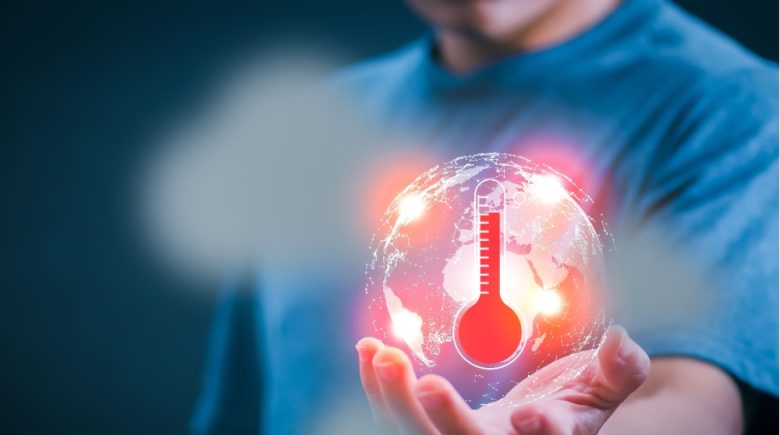Climate refers to the long-term pattern of weather in a region or across the globe. It includes average temperatures, rainfall, wind patterns, and other atmospheric conditions. While climate naturally shifts over thousands of years, human activities—especially carbon dioxide emissions—are now driving unprecedented and rapid changes.
Carbon dioxide (CO₂) is a greenhouse gas, meaning it traps heat from the sun. As a result, global temperatures have risen sharply and are expected to continue increasing. These changes also create dangerous feedback loops. For example, as frozen Arctic ground (permafrost) melts, it releases trapped greenhouse gases, which accelerate warming even further.
How Is Climate Change Affecting Our World?
Climate change is already reshaping the planet. It causes more frequent and destructive weather events, from powerful hurricanes to prolonged droughts and severe thunderstorms.
- Hurricanes: Wind speeds are now, on average, 18 mph higher than before human-driven warming, and this upward trend is likely to continue.
- Tornadoes: The connection between climate change and tornado strength is less clear, but warmer conditions are expected to fuel more intense storms overall.
- Ice loss: Polar ice is shrinking, raising sea levels and altering ecosystems.
What Will the Future Look Like?
Stronger Storms and Rising Seas
Warmer sea surface temperatures will generate stronger hurricanes that could devastate coastal communities and carry destructive power farther inland. Melting ice in the Arctic and Antarctic will continue raising sea levels, threatening low-lying regions.
Shifting Rainfall Patterns
Climate change won’t affect precipitation evenly. Some areas will become wetter, but others will dry out, leading to water shortages and the expansion of deserts. These shifts could have a serious impact on agriculture, especially in regions already near desert margins.
How Will Mid-Latitude Winters Change?
Winters in mid-latitude regions are expected to be shorter and milder overall. The coldest temperatures of the year will likely be less extreme, but occasional deep freezes may still occur. Paradoxically, warming at the poles may push cold Arctic air southward, leading to heavy snowstorms in areas not usually affected. Meanwhile, regions that currently experience snowy winters may see less snow and more rain.
Do Natural Cycles Explain Climate Change?
Earth’s climate does undergo natural cycles, but these cannot explain the rapid warming we see today.
- Milankovitch cycles: Long-term changes in Earth’s orbit and tilt affect climate over tens of thousands of years.
- Volcanoes: Eruptions release gases and ash that temporarily cool the planet. For instance, the 1815 eruption of Mount Tambora caused the “year without a summer,” with snow falling in June in parts of the U.S.
- Solar cycles: The sun goes through 11-year activity cycles, slightly influencing temperatures (about 0.18°F).
By contrast, human-caused warming has already raised global average temperatures by about 2.3–2.5°F, far beyond what these natural cycles could explain.
Has Earth Ever Been This Warm?
Yes—but not this quickly. In the distant past, CO₂ levels and temperatures were higher than today, such as during the Cambrian period (500 million years ago). Around 100 million years ago, average global temperatures were 9–18°F warmer than pre-industrial levels, and palm trees grew near the Arctic Circle.
However, today’s change is happening on a much shorter timescale, making it far harder for ecosystems, agriculture, and human societies to adapt.
How High Could Sea Levels Rise?
If all of Greenland’s ice were to melt, sea levels could rise by as much as 80 feet—a catastrophic but unlikely outcome. A more realistic projection is a 1–2 foot rise by 2100, which would still flood many coastal areas and displace millions of people.
Can We Slow Climate Change?
Yes—human choices still matter enormously. If we drastically cut carbon emissions by mid-century, warming could be limited to the best-case scenario of about 2.7°F above pre-industrial levels. Without action, the worst-case scenario could push warming up to 9°F, with devastating consequences.
Current global policies put us somewhere in the middle, with a projected rise of 4.5–5.4°F, a level that would significantly reshape coastlines, agriculture, and ecosystems worldwide.



